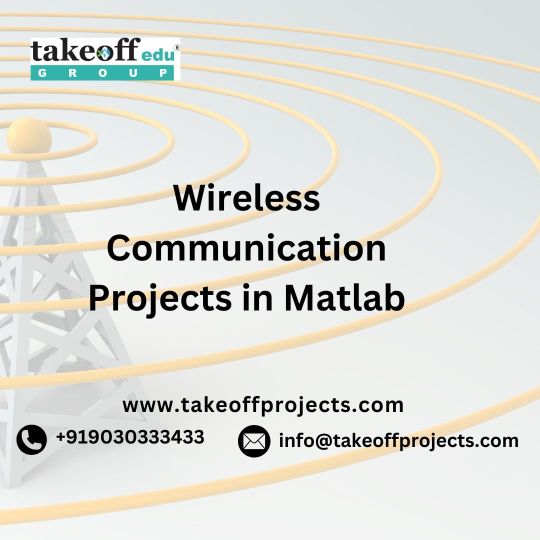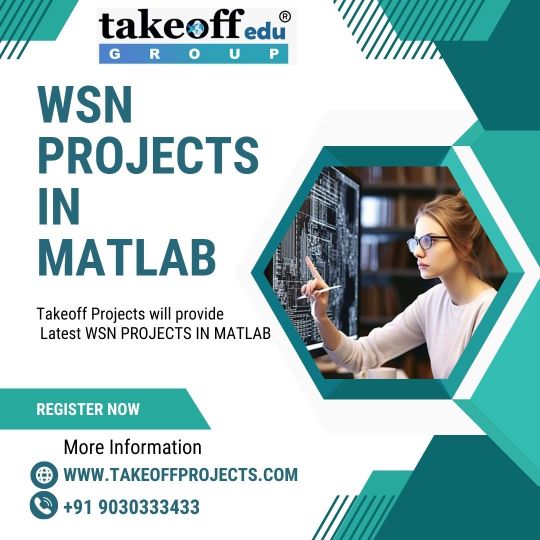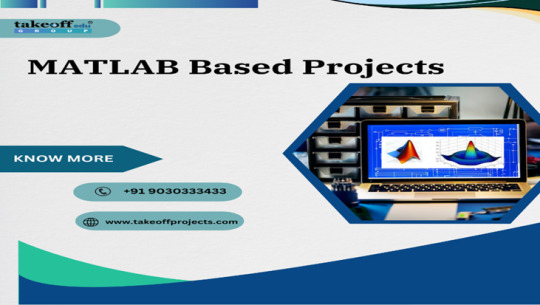#wireless communications matlab
Explore tagged Tumblr posts
Text
Off-Site Engineering Services: A Smart Approach to Scalable Innovation

In an increasingly global and fast-paced engineering environment, companies are under constant pressure to innovate quickly, reduce time-to-market, and manage operational costs. One solution that has gained significant traction in recent years is Off-Site Engineering Services. This model allows organizations to outsource specialized engineering tasks to remote teams while maintaining quality, compliance, and project timelines.
Off-site engineering has transformed how businesses approach product development, R&D, and system integration. It provides flexibility, scalability, and access to global talent without the overhead of in-house hiring or infrastructure expansion.
What Are Off-Site Engineering Services?
Off-site engineering services involve delegating design, development, analysis, and support tasks to a dedicated team located outside the client’s physical premises. This team may operate from a different city, state, or country, often functioning as an extension of the client’s internal engineering department.
Services typically provided off-site include:
Product design and development
CAD modeling and FEA analysis
Embedded system design
Control system development
Simulation and testing
Software and firmware development
Documentation and compliance
These services are supported via cloud-based collaboration tools, secure data access protocols, and regular project reviews, ensuring transparency and control.
Key Benefits of Off-Site Engineering Services
✅ Cost Efficiency
Off-site engineering significantly reduces costs associated with full-time staff, training, office space, and tools. Companies can scale engineering resources up or down based on project demand without long-term commitments.
✅ Access to Global Talent
With off-site services, companies can tap into a broad pool of skilled engineers and domain experts across the globe. This access accelerates innovation and ensures technical challenges are handled by specialists.
✅ Faster Time-to-Market
By delegating parallel tasks to off-site teams, in-house engineers can focus on core innovations. This concurrent development approach shortens project timelines and speeds up product launches.
✅ Focus on Core Competencies
Organizations can offload routine or time-consuming engineering tasks and concentrate on strategic initiatives like product differentiation, customer engagement, and business growth.
✅ Business Continuity
Off-site teams can provide backup during employee transitions, holidays, or workload surges. They also ensure project continuity in the face of unexpected disruptions like local resource shortages.
Applications Across Industries
Off-site engineering services are applicable across a wide range of industries, each benefiting from the flexibility and scalability this model offers:
Automotive: Control systems, ECU software, infotainment systems, electric vehicle (EV) architecture, and simulation.
Aerospace: Avionics systems, structural analysis, CAD modeling, and compliance documentation.
Industrial Automation: PLC programming, HMI development, motion control, and system integration.
Medical Devices: Regulatory documentation, embedded software, prototyping, and product design.
Renewable Energy: Solar and wind system modeling, battery management systems, and grid integration support.
Consumer Electronics: IoT device design, firmware development, and wireless communication solutions.
Key Services Offered in Off-Site Engineering
CAD and Product Design
3D modeling, rendering, and drafting using tools like SolidWorks, CATIA, and AutoCAD.
Design for manufacturability (DFM), design reviews, and rapid prototyping support.
Control System Development
PID controller tuning, mechatronics integration, and custom control logic.
Simulation tools like MATLAB/Simulink and LabVIEW for testing and validation.
Embedded Systems and Firmware
Microcontroller programming, real-time operating systems (RTOS), and IoT device firmware.
Protocol integration (CAN, LIN, Modbus, Ethernet).
Testing and Validation
Software-in-the-Loop (SIL), Hardware-in-the-Loop (HIL), and model-in-the-loop (MIL) testing.
Automated test case development and execution.
Simulation and Analysis
Finite Element Analysis (FEA), Computational Fluid Dynamics (CFD), and system-level modeling.
Structural, thermal, and dynamic simulations for design optimization.
Documentation and Compliance
Support for ISO, AS9100, FDA, and other industry-specific compliance documentation.
Technical manuals, BOM creation, and version control.
Off-Site vs. On-Site Engineering: A Comparison
Feature
Off-Site Engineering
On-Site Engineering
Cost Efficiency
High
Moderate to Low
Talent Access
Global
Local/Regional
Scalability
Flexible
Fixed resources
Control and Supervision
Remote, process-driven
Direct, face-to-face
Infrastructure Cost
Minimal for client
High (workspace, equipment)
Collaboration Tools
Digital (Zoom, Slack, etc.)
Physical meetings, systems
While on-site engineering offers direct interaction, off-site engineering provides a cost-effective and scalable model that aligns with modern development cycles and distributed teams.
Best Practices for Successful Off-Site Collaboration
Clear Communication Protocols: Establish regular stand-ups, updates, and feedback loops.
Defined Scope and Deliverables: A clear SOW (Statement of Work) ensures alignment.
Secure Data Handling: Use VPNs, secure servers, and IP protection agreements.
Project Management Tools: Platforms like Jira, Asana, or Trello help track tasks and milestones.
Regular Reviews and QA: Frequent quality checks ensure project progress and adherence to standards.
Why Choose Off-Site Engineering Today?
With remote work now the norm and global collaboration tools more advanced than ever, off-site engineering offers a practical solution for companies aiming to innovate without the traditional limitations of location and infrastructure. Whether you're a startup scaling quickly or an enterprise optimizing operations, off-site engineering can deliver high-quality results with speed and efficiency.
Conclusion
Off-site engineering services at Servotech Inc are revolutionizing how engineering work is done across industries. By providing access to expert talent, reducing costs, and accelerating time-to-market, this model allows businesses to stay competitive in a demanding technological landscape. When executed with strategic planning and the right partners, off-site engineering is not just an outsourcing strategy—it’s a pathway to smarter, more agile innovation.
0 notes
Text
Electrical Engineering Assignment Help
-Power Systems: Power generation, distribution, and renewable energy solutions.
-Telecommunication: Designing and analyzing communication systems, including wireless and optical communications.
-Signal Processing: Techniques like Fourier and Laplace transforms, digital filters, and signal transmission.
-Control Systems: System analysis, stability, feedback control, and automated systems.
2.Key Tools We Use
Our team leverages powerful software tools to tackle intricate electrical engineering challenges:
-LabVIEW: For creating virtual instruments and simulation of electrical systems.
-PSpice/Multisim: For circuit simulation and analysis of electrical circuits.
- AutoCAD/ANSYS: For designing electrical systems and layouts.
3.Why Electrical Engineering is So Demanding
-Complexity of Topics: Electrical engineering combines complex mathematical equations, theoretical concepts, and practical applications. Mastery over the core subjects, from circuit theory to digital electronics, requires constant practice
4.Our Process for Assisting Students
-Step 1: Request Your Assignment Help: Share the details of your assignment or project through email or our website.
-Step 2: Customized Solutions**: Our experts study the problem and create a custom solution tailored to your requirements.
5.Advanced Topics and Research Support
- Advanced Circuit Design: Focused on intricate designs and simulations for complex circuits.
-Power System Optimization: Helping students work on advanced power system analysis and optimization techniques
6. Student Testimonials
-All Assignment Experts really helped me understand power systems better. Their clear explanations made complex concepts easier to grasp. – Ryan, Electrical Engineering Student
- I was struggling with MATLAB assignments, but the team here guided me through every step. They helped me improve my grades significantly.” – Jessica, Undergraduate Student
- I got my renewable energy project done with the help of experts. The team was quick, and my professor was impressed by the quality. – Mark, Senior Student
Kickstart Your Path to Academic Success Today!
0 notes
Text
Bachelor’s Degree in Electronics and Communication Engineering
Bachelor’s Degree in Electronics and Communication Engineering: A Comprehensive Guide
A Bachelor’s Degree in Electronics and Communication Engineering (ECE) is one of the most sought-after programs for students interested in technology, communication systems, and embedded technologies. This degree provides a strong foundation in electrical circuits, digital systems, signal processing, and telecommunication networks. With the rise of modern communication technologies, professionals in Electronics and Communication Engineering have vast career opportunities in industries such as telecommunications, automation, embedded systems, and information technology.
What is Electronics and Communication Engineering?
Electronics and Communication Engineering (ECE) is a branch of engineering that deals with designing, developing, and testing electronic circuits, communication devices, and software-based systems. It integrates concepts from electrical engineering, computer science, and communication technologies to enhance modern telecommunication and automation solutions.
Curriculum and Subjects
A Bachelor’s Degree in Electronics and Communication Engineering typically spans four years, covering various core and elective subjects. Some of the essential subjects include:
Digital Electronics – Understanding logic circuits and their applications.
Analog Communication – Basics of signal transmission and modulation.
Microprocessors and Microcontrollers – Working with embedded systems.
Wireless Communication – Study of modern communication protocols.
Internet of Things (IoT) – Integration of devices for smart solutions.
Control Systems – Automation and robotics applications.
VLSI Design – Advanced circuit design for compact devices.
Network and Security – Ensuring secure communication protocols.
Career Opportunities for ECE Graduates
A Bachelor’s Degree in Electronics and Communication Engineering opens doors to various career paths. Graduates can work in sectors like:
Telecommunication Industry – Companies like Ericsson, Nokia, and Airtel hire ECE graduates for network infrastructure development.
Embedded Systems and IoT – Roles in developing smart devices and automation solutions.
Software and IT Industry – Coding, testing, and developing firmware for electronic applications.
Aerospace and Defense – Opportunities in avionics, radar, and satellite communication.
Robotics and Automation – Designing AI-based industrial and consumer robots.
Semiconductor Industry – Working on chip design, fabrication, and testing.
Research and Development – Innovating new communication and electronic systems.
Skills Required for Success in ECE
To excel in Electronics and Communication Engineering, students should develop the following skills:
Problem-Solving – Ability to troubleshoot and optimize electronic systems.
Programming Knowledge – Familiarity with languages like Python, C, and MATLAB.
Circuit Designing – Expertise in PCB design and simulation.
Communication Skills – Effective technical communication and teamwork.
Project Management – Handling large-scale engineering projects efficiently.
Future Scope of ECE
The future of Electronics and Communication Engineering is promising, with advancements in 5G technology, Artificial Intelligence (AI), Internet of Things (IoT), and Smart Cities. Industries are continually evolving, requiring skilled ECE professionals to drive innovation.
Conclusion
A Bachelor’s Degree in Electronics and Communication Engineering is an excellent choice for students passionate about technology and communication. The degree provides theoretical knowledge and hands-on experience to prepare graduates for lucrative career opportunities. With the right skills and continuous learning, ECE professionals can contribute to cutting-edge technological advancements globally.
0 notes
Text
IT Sectors jobs in Jobseekerspage.com
JobseekersPage.com offers IT sector job listings across various roles, including software development, cybersecurity, and data analytics. The platform supports advanced search filters for location, experience level, and job type, simplifying the job search process for candidates. Visit JobseekersPage.com to explore current opportunities and apply.
IT (Information Technology) sectors offer a diverse range of jobs, covering everything from software development to cybersecurity. Below is a breakdown of key areas within the IT sector and the types of jobs commonly found in each:
1. Software Development
Roles:
Front-end Developer
Back-end Developer
Full-stack Developer
Mobile App Developer
Game Developer
Skills Required:
Programming languages (e.g., Java, Python, JavaScript, C++)
Frameworks (e.g., React, Angular, Spring)
Version control (e.g., Git)
2. Data Science and Analytics
Roles:
Data Scientist
Data Analyst
Machine Learning Engineer
Business Intelligence Analyst
Skills Required:
Data analysis tools (e.g., Excel, Tableau, Power BI)
Programming languages (e.g., Python, R)
Machine learning frameworks (e.g., TensorFlow, Scikit-learn)
SQL and data visualization
3. Cybersecurity
Roles:
Cybersecurity Analyst
Ethical Hacker/Penetration Tester
Security Architect
Incident Response Analyst
Skills Required:
Network security
Ethical hacking tools (e.g., Metasploit, Wireshark)
Certifications (e.g., CISSP, CEH, CompTIA Security+)
4. Cloud Computing
Roles:
Cloud Engineer
Cloud Architect
DevOps Engineer
Site Reliability Engineer (SRE)
Skills Required:
Cloud platforms (e.g., AWS, Azure, Google Cloud)
Containerization tools (e.g., Docker, Kubernetes)
Automation and CI/CD pipelines
5. Networking
Roles:
Network Engineer
Network Administrator
Wireless Communication Specialist
Skills Required:
Networking protocols (e.g., TCP/IP, DNS)
Hardware configuration
Certifications (e.g., CCNA, CCNP)
6. Artificial Intelligence and Robotics
Roles:
AI Engineer
Robotics Engineer
Natural Language Processing (NLP) Specialist
Skills Required:
AI tools (e.g., OpenAI, IBM Watson)
Robotics programming (e.g., ROS, MATLAB)
Deep learning techniques
7. IT Management and Support
Roles:
IT Project Manager
IT Support Specialist
System Administrator
Database Administrator
Skills Required:
Project management methodologies (e.g., Agile, Scrum)
ITIL and service management
Database tools (e.g., Oracle, MySQL)
8. Web Development
Roles:
Web Developer
Web Designer
SEO Specialist
Skills Required:
HTML, CSS, JavaScript
Content management systems (e.g., WordPress)
SEO and web analytics
9. Emerging Technologies
Roles:
Blockchain Developer
IoT Engineer
Quantum Computing Researcher
Skills Required:
Blockchain frameworks (e.g., Ethereum, Hyperledger)
IoT platforms and sensors
Quantum programming (e.g., Qiskit)
10. Product and UX Design
Roles:
UX/UI Designer
Product Manager
Interaction Designer
Skills Required:
Design tools (e.g., Figma, Adobe XD)
User research and prototyping
Agile product development
11. IT Consulting
Roles:
IT Consultant
Systems Analyst
Technology Strategist
Skills Required:
Business acumen
Systems integration
Technical writing and documentation
0 notes
Text
MATLAB Assignment Help
1.Hardware-in-the-Loop (HIL) Simulation: Assists in testing control algorithms on physical hardware, critical for fields like automotive and aerospace engineering.
2.Embedded System Code Generation: Helps students generate code from Simulink models to run on microcontrollers or DSPs, essential for IoT and robotics.
3.Multi-Domain Modeling: Integrates systems across electrical, mechanical, and fluid power, useful for automotive and aerospace applications.
4.System Identification: Guides students in estimating parameters from real data, improving model accuracy for biomedical and chemical projects.
5.Cybersecurity in Control Systems: Simulates cyber-attack scenarios to assess control system resilience, relevant for smart infrastructure and critical systems.
Expanded Educational Support
1.Project and Dissertation Help: Full support for designing, testing, and reporting on complex projects.
2.Model Debugging: Assistance with troubleshooting issues in model configuration and simulation diagnostics.
3.Industry Certifications Prep: Helps prepare for certifications like MathWorks’ Certified Simulink Developer.
4.Career-Focused Mentorship: Guidance on applying Simulink skills in real-world roles in engineering and technology.
Complex Project Applications
1.Renewable Energy Optimization: Supports solar, wind, and battery storage simulations.
2.Biomedical Signal Processing: Projects involving real-time ECG/EEG processing or medical device control.
3.Advanced Control Design: Expertise in MPC and adaptive controllers for robotics and autonomous systems.
4 Wireless Communication Systems: Simulations for channel noise, modulation, and protocol testing.
---
Specialized Tools and Libraries
1.Simscape Libraries: Model realistic multi-domain physical systems.
2.AI and Deep Learning: Integrate AI for predictive maintenance and adaptive systems.
3.Control System and Signal Processing Toolboxes: Helps with control tuning and signal analysis.
4.MATLAB Compiler and Code Generation: Converts Simulink models into deployable applications or embedded code.
With industry-experienced tutors, customized support, and hands-on learning, All Assignment Experts ensure students master Simulink for both academic success and career readiness in engineering and tech.

0 notes
Text

Wireless Communication Projects in Matlab
MATLAB is a comprehensive tool where many wireless power projects can be simulated, where key technologies and concepts can be tested. Some projects may cover the application and evaluation of modulation and demodulation techniques , MIMO system and OFDM for signal performance analysis. MATLAB toolboxes cater for complex applications involving simulating 5G NR physical layers, cognitive radio systems as well as wireless sensor networks. Also there is an option to familiarize with such topics as channel coding techniques, adaptive beamforming and Doppler effect simulation in order to get insights into practical issues in wireless networks. These projects are perfect for getting hold of ideas in signal processing, channel modeling, and or course network protocols, thereby making MATLAB a perfect tool to develop wireless communications.
0 notes
Text
WSN Projects on MATLAB for Engineering Students

Takeoff Projects team members are highly skilled and have a strong belief that the WSN projects in MATLAB will be a valuable learning tool that boosts the confidence of students to complete and accomplish their academic goals in wireless communications and IoT. We consider that not only should students learn about WSN and MATLAB in theory, but more importantly, they will need practical skills and experience for their future careers and the next generation of engineers, scientists, and researchers.
List of WSN Projects on MATLAB for Students & Researchers:
1.Design and Application of Intelligent Agriculture Service System with LoRa-based on Wireless Sensor Network:
This project proposes a low-power farm environment detection system based on LoRa wireless technology. In view of the current intelligent agriculture's collection and processing of production site data and the control requirements of related equipment, ZigBee, Wi-Fi, GPRS traditional wireless sensing technology has short trans-mission distance and signal interference in greenhouse environment monitoring systems such as large-scale farms. Shortcomings such as complex networking
2.Energy-Efficient Resource Allocation in Wireless Energy Harvesting Sensor Networks:
In this project, we mainly concentrate on harvesting the energy in WSN. The Energy Harvesting (EH) sensors have been proposed to overcome the mentioned problem in recent years. These sensors can harvest their required energy from environment in different methods, resulting in longer life time.
3.Energy-Neutral Wireless Sensor Network Based on SWIPT in Wireless Powered Communication Networks:
In this project, we introduce a novel ENO framework. For energy-neutral operation (ENO) of wireless sensor networks (WSNs), we consider a WSN deployed in a wireless powered communication network. In this network, sensor nodes with high harvesting energies and good link budgets have energy remaining after sending their data to the cluster head (CH), whereas the CH suffers from energy scarcity.
4.Data Centric Routing in WSN for Energy Conservation Using Directed Diffusion:
In this project, the work focuses on designing a data-centric approach, Directed Diffusion (DD) for reliable energy efficiency. One of the growing techniques is under the Wireless sensor networks (WSNs), which are associated with the smaller nodes used to sense, calculation and also have communication abilities and Energy efficiency is a challenging issue in WSN.
5.Distributed Learning Algorithms for Optimal Data Routing in IoT Networks:
In this project, we consider and work on the problem of joint lossy data compression and data routing in distributed Internet of Things (loT). Heterogeneous sources compress their data using a source-specific lossy compression scheme, where heterogeneity is meant in terms of signal type and/or transmission rates.
MATLAB is an industrial strength tool for the simulation and analysis of WSNs, which have various built-in functions and libraries for digital signal processing, communication systems, and machine learning.
In addition, we offer tutorials and resources to facilitate the students' learning process including the software and technologies adopted in the WSN projects employed in MATLAB. Are you a student interested in getting hands on experience in WSNs and MATLAB, then you should take us into consideration for your next project. It is we, therefore, invite you to reach out to us and for more information about our WSN Projects in MATLAB.
Visit More information: https://takeoffprojects.com/wsn-projects-in-matlab Meta Tags: WSN Projects, MATLAB Projects, CSE Projects, Engineering Projects, Final Year Projects, Academic Projects
#WSN Projects#MATLAB Projects#CSE Projects#academic projects#academic students projects#final year students projects
0 notes
Text
Unique MATLAB based projects for final year Students
Hello students!!! Are you searching for MATLAB based projects, then what are you waiting for??? Now Takeoff Edu group gives more innovative projects, which is helpful for your Academic year.
MATLAB projects involving both theory and practical work are perfect for discovering, theorizing and adding new solutions and approaches to the ones that are already known in fields different from engineering and science to finance and so on. Matlab is a powerful and by way of many modules and kits, Matlab equips researchers, engineers and developers to quickly solve complicated problems.
In engineering, MATLAB is very efficient in the designing, analysis, and modelling of engineering systems including, among other, control systems, signal processing, image processing as well as video processing. Projects in this area may range from mapping of image enhancement, innovation in robot controllers to simulating of systems dynamics for predictive maintenance.

The below MATLAAB based projects Titles are taken from “Takeoff Edu Group”:
Latest:
COMPARATIVE STUDY OF LINEAR PRECODING TECHNIQUES.
Average Information based Spectrum Sensing for Cognitive Radio.
MIMO Spectrum Sensing for Cognitive Radio-Based Internet of Things.
Deep Learning-based Sum Data Rate and Energy Efficiency Optimization for MIMO-NOMA Systems.
On Performance of Underwater Wireless Optical Communications under Turbulence.
Trendy:
Power Allocation for Non-Orthogonal mm Wave Systems with Mixed-Traffic
No coherent Backscatter Communications over Ambient OFDM Signals
A Novel Pilot Decontamination on Uplink Massive MIMO
Arena Function A Framework for Computing Capacity Bounds in Wireless Networks
Resource Allocation for Wireless-Powered IOT Networks with Short Packet Communication
Standard:
Application of MIMO-OFDM Technology in UAV Communication Network
Interference Alignment Techniques for MIMO
Capacity of Wireless Networks with Directed Energy Links in the Presence of Obstacles
Leaky Least Mean Square (LLMS) Algorithm for Channel Estimation in BPSK-QPSK-PSK MIMO-OFDM System
Subcarrier Allocation and Precoder Design for Energy Efficient MIMO-OFDMA Downlink Systems
Finally, MATLAB-based projects are the essential breeding ground for innovation, allowing professionals to answer and address the issues they face as well as to not only touch on but to change boundaries of what is possible in their respective areas.
Takeoff Edu Group provides all kind of projects with new ideas and best guidance for engineering students. Here we also support students to upgrade their knowledge and skills.
#MATLAB Projects#Deep learning Projects#Final Year projects#Mini MATLAB Projects#ECE Projects#Image Processing Projects.
0 notes
Text
How to Secure a Job as an Antenna Test Engineer

Are you interested in a career as an Antenna Test Engineer? Do you have a passion for ensuring that wireless communication devices perform at their best? If so, you're on the right track. In this article, we will guide you through the steps required to land a job as an Antenna Test Engineer. With the increasing demand for connectivity and wireless technology, this field offers promising career prospects. So, let's delve into the details and understand what it takes to become an Antenna Test Engineer.
Understanding the Role of an Antenna Test Engineer
Before we dive into the qualifications and requirements, it's essential to understand the responsibilities of an Antenna Test Engineer. Antenna Test Engineers play a crucial role in the development and testing of antennas used in various wireless communication devices such as smartphones, routers, and IoT devices. Their primary responsibilities include:
Antenna Design and Optimization: Antenna Test Engineers design, simulate, and optimize antenna systems to ensure efficient signal reception and transmission.
Testing and Measurement: They conduct extensive tests and measurements to assess antenna performance, including radiation patterns, gain, and impedance.
Quality Assurance: Engineers ensure that antennas meet industry standards and regulatory requirements.
Problem Solving: They troubleshoot and solve issues related to antenna performance and signal interference.
Educational Requirements
To kickstart your career as an Antenna Test Engineer, you'll need the right educational background:
Bachelor's Degree: A bachelor's degree in electrical engineering, telecommunications, or a related field is typically required. This provides a solid foundation in electronics and communication systems.
Master's Degree (Optional): Pursuing a master's degree can enhance your knowledge and make you a more competitive candidate in the job market.
Essential Skills and Knowledge
RF Fundamentals: A deep understanding of Radio Frequency (RF) principles is essential for working with antennas. This includes knowledge of RF circuit design and electromagnetic theory.
Software Proficiency: Familiarity with software tools such as MATLAB, CST Microwave Studio, and HFSS for antenna design and simulation is crucial.
Testing Equipment: Proficiency in using testing equipment like Vector Network Analyzers (VNAs) and Spectrum Analyzers is required for conducting antenna tests.
Communication Skills: Effective communication is vital when working in a team and conveying technical information to non-technical stakeholders.
Problem-Solving Abilities: Antenna Test Engineers often encounter complex challenges, so strong problem-solving skills are a must.
Gaining Practical Experience
Internships: Consider interning with companies that specialize in antenna design and testing. This hands-on experience can be invaluable when seeking a full-time position.
Certifications: Obtaining relevant certifications, such as Certified Wireless Network Administrator (CWNA) or Certified Wireless Technician (CWT), can enhance your credentials.
Building a Strong Resume and Portfolio
Resume: Craft a well-structured resume that highlights your education, skills, internships, and certifications. Tailor it to the specific job you're applying for.
Portfolio: Create a portfolio showcasing your antenna design projects and test results. This visual representation of your work can impress potential employers.
Job Search and Networking
Online Job Portals: Utilize online job portals and professional networking platforms like LinkedIn to search for job openings.
Networking: Attend industry events, conferences, and workshops to expand your professional network. Networking can open doors to job opportunities.
Acing the Interview
Interview Preparation: Prepare for interviews by reviewing common interview questions related to antenna engineering. Be ready to discuss your experiences and problem-solving abilities.
Conclusion
Becoming an Antenna Test Engineer requires a solid educational foundation, practical experience, and a passion for wireless communication technology. By following these steps and continuously improving your skills, you can increase your chances of securing a job in this exciting and evolving field. Remember, persistence and dedication are key to success in your journey towards becoming an Antenna Test Engineer. Good luck!
#electromagnetic antenna engineer jobs in usa#emc test job#hardware design engineer in buffalo#jobs for radar cross sections engineer#top rf engineering search engine#jobs for antenna test engineer#across the spiderverse#engineer job#antenna job#antenna technician
1 note
·
View note
Text

#wireless communications matlab#matlab homework help#digital signal processing help in matlab#matlab project help#image processing in matlab
0 notes
Text
Network Security Projects

Network Security Projects are here to solve all the security issues that are privacy, integrity, and so on. Now it’s time to talk about network security, which stands to look after any type of malware or attack. Without a doubt, security is a mandate on both wired and wireless topology.
0 notes
Text
Bachelor’s Degree in Electronics and Communication Engineering
Bachelor’s Degree in Electronics and Communication Engineering: A Comprehensive Guide
A Bachelor’s Degree in Electronics and Communication Engineering (ECE) is one of the most sought-after programs for students interested in technology, communication systems, and embedded technologies. This degree provides a strong foundation in electrical circuits, digital systems, signal processing, and telecommunication networks. With the rise of modern communication technologies, professionals in Electronics and Communication Engineering have vast career opportunities in industries such as telecommunications, automation, embedded systems, and information technology.
What is Electronics and Communication Engineering?
Electronics and Communication Engineering (ECE) is a branch of engineering that deals with designing, developing, and testing electronic circuits, communication devices, and software-based systems. It integrates concepts from electrical engineering, computer science, and communication technologies to enhance modern telecommunication and automation solutions.
Curriculum and Subjects
A Bachelor’s Degree in Electronics and Communication Engineering typically spans four years, covering various core and elective subjects. Some of the essential subjects include:
Digital Electronics – Understanding logic circuits and their applications.
Analog Communication – Basics of signal transmission and modulation.
Microprocessors and Microcontrollers – Working with embedded systems.
Wireless Communication – Study of modern communication protocols.
Internet of Things (IoT) – Integration of devices for smart solutions.
Control Systems – Automation and robotics applications.
VLSI Design – Advanced circuit design for compact devices.
Network and Security – Ensuring secure communication protocols.
Career Opportunities for ECE Graduates
A Bachelor’s Degree in Electronics and Communication Engineering opens doors to various career paths. Graduates can work in sectors like:
Telecommunication Industry – Companies like Ericsson, Nokia, and Airtel hire ECE graduates for network infrastructure development.
Embedded Systems and IoT – Roles in developing smart devices and automation solutions.
Software and IT Industry – Coding, testing, and developing firmware for electronic applications.
Aerospace and Defense – Opportunities in avionics, radar, and satellite communication.
Robotics and Automation – Designing AI-based industrial and consumer robots.
Semiconductor Industry – Working on chip design, fabrication, and testing.
Research and Development – Innovating new communication and electronic systems.
Skills Required for Success in ECE
To excel in Electronics and Communication Engineering, students should develop the following skills:
Problem-Solving – Ability to troubleshoot and optimize electronic systems.
Programming Knowledge – Familiarity with languages like Python, C, and MATLAB.
Circuit Designing – Expertise in PCB design and simulation.
Communication Skills – Effective technical communication and teamwork.
Project Management – Handling large-scale engineering projects efficiently.
Future Scope of ECE
The future of Electronics and Communication Engineering is promising, with advancements in 5G technology, Artificial Intelligence (AI), Internet of Things (IoT), and Smart Cities. Industries are continually evolving, requiring skilled ECE professionals to drive innovation.
Conclusion
A Bachelor’s Degree in Electronics and Communication Engineering is an excellent choice for students passionate about technology and communication. The degree provides theoretical knowledge and hands-on experience to prepare graduates for lucrative career opportunities. With the right skills and continuous learning, ECE professionals can contribute to cutting-edge technological advancements globally.
0 notes
Text
ece project centers in chennai

ECE Project Centers in Chennai As an Electronics and Communication Engineering graduate, Hardware and Software Technology Choice is a key step in the project cycle.There are so many technologies such as System (8051, PIC, Arduino, ARM, Raspberry-pi), Matlab (Image Processing), Power Electronics, IOT, and Wireless Communications, Mobile Computing, Wifi&Lifi.
Admission Office No:172, Rahaat plaza, Vadapalani, Chennai.
1 note
·
View note
Text
Matlab Applications
Applications of Matlab:

The current advancements in MATLAB have made it a very competitive tool for Artificial Intelligence, Robotics, Image Processing, Wireless Communication, Machine Learning, Data Analytics, and other fields. MATLAB may be used as a tool for simulating diverse electrical networks. Although it has a wide range of applications, circuit branches and mechanical engineering employ it primarily to tackle a fundamental set of problems. It is a tool that makes it possible to compute, programme, and visually represent the outcomes.
The matrix or array is the fundamental data type in MATLAB, as the name would imply. Professionally constructed MATLAB toolboxes let you materialise your fantasies. Programming in MATLAB is very similar to programming in C, so you just need to brush up on your fundamental programming knowledge.
MATLAB is used in the applications listed below.
Statistics and artificial intelligence (ML)
For programmers, MATLAB's toolbox can be quite useful. It is simple to implement statistical techniques like descriptive or inferential statistics. The same is true for machine learning. Modern challenges can be solved using a variety of models. Big data applications can also utilise the employed methods.
Fitting curves
The toolbox for curve fitting aids in the analysis of data distribution patterns. It is possible to anticipate future trends once a specific trend, which can be a curve or surface, has been obtained. Additional graphing, integral and derivative calculations, interpolation, and other tasks are possible.
Control systems of a certain sort are attainable. Bode plots, Nyquist plots, open-loop and closed-loop dynamics, controllability and observability, and other factors can be acquired One can visualise various controlling methods like PD, PI, and PID. Either time or frequency domain analysis is possible.
Processing of Signals
Various engineering disciplines teach signals, systems, and digital signal processing. But MATLAB offers the chance to properly visualise this. On any given signal, different transforms, including Laplace, Z, and others, can be applied. A theorem may be verified. Either time or frequency domain analysis is possible. There are numerous available built-in functions.
Mapping
There are numerous uses for mapping across numerous industries. For instance, the MapReduce tool, which has numerous real-world applications, is quite important in the field of big data. Analysis of theft or the detection of financial fraud, regression models, and contingency.Data mapping can be used for analysis, social media prediction techniques, data monitoring, etc.
In-depth learning
It's a type of machine learning that can be used for picture analysis in medicine, speech recognition, and financial fraud detection. You can use a variety of technologies, including time-series analysis, artificial neural networks (ANN), and fuzzy logic.
Analyzing finances
Before beginning any project, an entrepreneur must conduct a thorough investigation and a financial analysis to determine the best course of action. All of the necessary tools are contained in MATLAB. It is possible to identify components like profitability, solvency, liquidity, and stability. It is possible to evaluate business valuation, capital budgeting, cost of capital, etc.
Processing images
The most common application that we observe almost every day are bar.When delivering data from distant satellites and receiving and decoding it in the same manner, digital image processing also plays a significant role. All of these applications can be supported by existing algorithms.
Analysis of text
Sentiment analysis can be performed on the text. Within a few milliseconds of entering any text, Google returns millions of search results. Text analysis makes all of this possible. In forensics, handwriting comparison is possible. One piece of software that can do everything, with no restrictions on applications.
Designing electric vehicles
Used for modeling electric vehicles and analyze their performance with a change in system inputs. Speed torque comparison, designing and simulating of a vehicle, whatnot.
Aerospace
This toolbox in MATLAB is used for analyzing offers resources for speech analysis, acoustic measurement, and audio processing. It also offers methods for extracting audio and speech features and transforming audio signals.
Conclusion:
It offers a sizable library of mathematical operations for solving ordinary differential equations and performing linear algebra, statistics, Fourier analysis, filtering, optimization, and numerical integration. It offers tools for creating personalised plots as well as built-in graphics for visualising data.
0 notes
Text
Mathworks rf toolbox

Mathworks rf toolbox manual#
Mathworks rf toolbox software#
list prices start at $2,000 for the RF Blockset and $1,000 for the RF Toolbox. The RF Blockset and RF Toolbox are available immediately for Windows, UNIX/Linux, and Macintosh platforms. "The release of these two new tools for RF applications provides engineers and system architects with even more functionality in MATLAB and Simulink and ultimately enables them to accelerate the development of signal processing and communication systems."
Mathworks rf toolbox software#
"Engineers from all industries have come to rely on The MathWorks as providers of leading tools for developing algorithms, modeling and simulating complex systems, generating real-time code, and verifying hardware and software implementation," said Colin Warwick, communication product manager, The MathWorks. This combination enables the development of algorithms to mitigate the effect of RF impairments on system performance. During simulation, blocks are modeled using a time-domain, complex- baseband representation for fast simulations and compatibility with other Simulink blocks, such as those in the Communications Blockset (available separately). The RF Blockset works with the RF Toolbox to manipulate network parameters in the MATLAB workspace or to read in data from industry-standard file formats. Additionally, the RF Toolbox includes rectangular, polar, and Smith(R) charts for visualizing data.
Mathworks rf toolbox manual#
With the RF Toolbox, RF engineers can now access industry standard data files and work with network parameters in MATLAB to manipulate data and visualize results of analysis, thereby eliminating error-prone manual calculations. Building the model is faster than by other methods, and the conversion to a baseband complex model means the model runs fast too."Īlso available from The MathWorks is the RF Toolbox, which extends the MATLAB technical computing environment by providing users with pre-built design and analysis functions and a graphical tool for working with, analyzing, and visualizing the behavior of RF components. "With RF Blockset I can model both domains in a rapid way. "Modeling the interaction of the two worlds of signal processing algorithms and RF power amplifier characteristics is critical to my work," said Jussi Hovila, algorithm and hardware design engineer with Nokia Networks. As a result, users can optimize an entire RF system, eliminating laborious programming and delivering substantial time and cost savings. Engineers can validate a working model in Simulink and then use that model as an executable specification to verify design and implementation. Using the RF Blockset, system architects can apply Model-Based Design to develop commercial and defense wireless communication systems and semiconductors faster and more efficiently. The MathWorks RF Blockset works within the Simulink environment and offers users a library of blocks to model the behavior of RF amplifiers, mixers, filters, and transmission lines. Both products enhance the functionality of the MathWorks industry-leading software platforms, MATLAB(R) and Simulink(R), by providing users with a broad scope of features and benefits for RF system design, analysis, development, and implementation. 30 /PRNewswire/ - The MathWorks today announced the availability of the RF Blockset and the RF Toolbox, two new products designed to expand the scope of Model-Based Design for signal processing and communications engineering applications. RF Blockset and RF Toolbox Expand Scope of Model-Based Design for Wireless System Development

0 notes
Text
Mathworks rf toolbox

#MATHWORKS RF TOOLBOX FULL VERSION#
#MATHWORKS RF TOOLBOX MANUAL#
#MATHWORKS RF TOOLBOX SOFTWARE#
#MATHWORKS RF TOOLBOX MANUAL#
With the RF Toolbox, RF engineers can now access industry standard data files and work with network parameters in MATLAB to manipulate data and visualize results of analysis, thereby eliminating error-prone manual calculations. Building the model is faster than by other methods, and the conversion to a baseband complex model means the model runs fast too."Īlso available from The MathWorks is the RF Toolbox, which extends the MATLAB technical computing environment by providing users with pre-built design and analysis functions and a graphical tool for working with, analyzing, and visualizing the behavior of RF components. "With RF Blockset I can model both domains in a rapid way. "Modeling the interaction of the two worlds of signal processing algorithms and RF power amplifier characteristics is critical to my work," said Jussi Hovila, algorithm and hardware design engineer with Nokia Networks. As a result, users can optimize an entire RF system, eliminating laborious programming and delivering substantial time and cost savings. Engineers can validate a working model in Simulink and then use that model as an executable specification to verify design and implementation. Using the RF Blockset, system architects can apply Model-Based Design to develop commercial and defense wireless communication systems and semiconductors faster and more efficiently. The MathWorks RF Blockset works within the Simulink environment and offers users a library of blocks to model the behavior of RF amplifiers, mixers, filters, and transmission lines.
#MATHWORKS RF TOOLBOX SOFTWARE#
Both products enhance the functionality of the MathWorks industry-leading software platforms, MATLAB(R) and Simulink(R), by providing users with a broad scope of features and benefits for RF system design, analysis, development, and implementation. 30 /PRNewswire/ - The MathWorks today announced the availability of the RF Blockset and the RF Toolbox, two new products designed to expand the scope of Model-Based Design for signal processing and communications engineering applications. Our MATLAB 2017 TAH bundle includes ALL of the following additional products.RF Blockset and RF Toolbox Expand Scope of Model-Based Design for Wireless System Development Please contact if you require any assistance. ME-IT is always happy to assist with software orders & installations. Those of you who typically pay for additional special toolboxes will still need to do that. If you are currently using the regular research MATLAB license obtained from ME that relies on a connection to CAEN license server, and you want to be able to use it untethered, you will need ME-IT to change the license info. ME-IT encourages the MATLAB license that requires the connection to CAEN, as it automatically updates each year and requires zero effort. If you currently use and purchase the ITS version (untethered) which expires each January, please see ME-IT to change your license to the “no additional charge” license, and you will remain untethered. Please do not order or pay for MATLAB through ITS. No connection to the CAEN license server is required.
#MATHWORKS RF TOOLBOX FULL VERSION#
MATLAB® is a high-level language and interactive environment that enables you to perform computationally intensive tasks faster than with traditional programming languages such as C, C++, and Fortran.Īn agreement is in place between the College of Engineering/CAEN and Mathworks so that any faculty or staff member can get a full version of MATLAB (standard set of toolboxes) for no additional charge and it can be used off the network.

0 notes